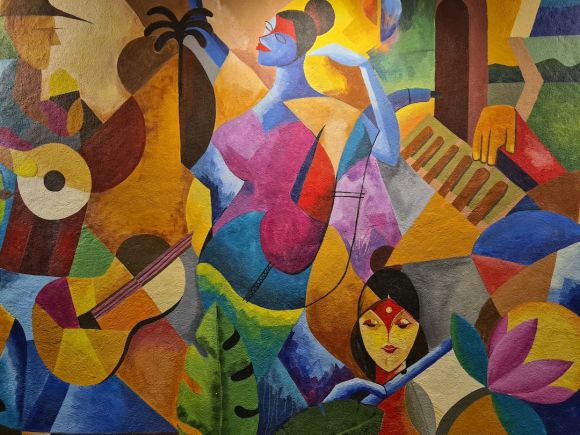Abstract art is a form of artistic expression that has captivated audiences for centuries. With its bold colors, dynamic shapes, and unconventional perspectives, abstract art challenges the viewer to interpret and appreciate art in a completely different way. In this article, we will explore the fascinating world of abstract art, its origins, key artists, and the impact it has had on the art world.
Origins of Abstract Art
Abstract art emerged as a response to the traditional representational art that dominated the art scene for centuries. The shift towards abstraction began in the late 19th and early 20th centuries, as artists sought to break free from the confines of realistic depictions and explore the realm of imagination and emotion. The pioneers of abstract art, such as Wassily Kandinsky and Piet Mondrian, believed that art should be a reflection of the artist’s inner world, rather than an imitation of the external one.
Key Characteristics of Abstract Art
One of the defining features of abstract art is its emphasis on form and color over realistic representation. In abstract art, artists use shapes, lines, and colors to convey their ideas and emotions, often departing from the recognizable physical world. Abstract art can range from simple geometric shapes to complex and intricate compositions, inviting viewers to engage with the artwork on a deeper level and interpret its meaning for themselves.
Prominent Abstract Artists
Over the years, numerous artists have made significant contributions to the world of abstract art. Wassily Kandinsky, often referred to as the father of abstract art, believed that color and form had the power to evoke spiritual and emotional responses. His works, such as “Composition VIII” and “Yellow, Red, Blue,” are renowned for their vibrant colors and dynamic compositions.
Another influential abstract artist is Piet Mondrian, known for his iconic grid-based paintings consisting of primary colors and straight lines. Mondrian’s works, such as “Composition with Red, Blue, and Yellow,” reflect his belief in the harmony and balance of the universe.
Contemporary abstract artists, such as Jackson Pollock and Mark Rothko, have also made significant contributions to the genre. Pollock’s drip paintings, created by pouring and dripping paint onto canvases, challenged traditional notions of artistic technique and invited viewers to experience art in a more visceral and spontaneous way. Rothko’s large-scale color field paintings, characterized by luminous rectangular forms, aimed to evoke deep emotional responses from the viewers.
Impact on the Art World
Abstract art has had a profound impact on the art world, influencing not only painting but also sculpture, architecture, and design. Its emphasis on individual expression and subjective interpretation has encouraged artists to push the boundaries of creativity and experiment with new forms of artistic expression.
Moreover, abstract art has also played a significant role in the evolution of art criticism and theory. Critics and scholars have grappled with the question of how to interpret abstract art, leading to new methodologies and approaches to understanding and appreciating art.
Conclusion
In conclusion, the world of abstract art is a fascinating realm that challenges traditional notions of representation and invites viewers to engage with art on a deeper level. From its origins as a response to representational art to its impact on the art world, abstract art continues to captivate audiences and inspire artists to push the boundaries of creativity. Whether you are a seasoned art enthusiast or a casual observer, exploring the world of abstract art is an experience that is sure to leave a lasting impression.
